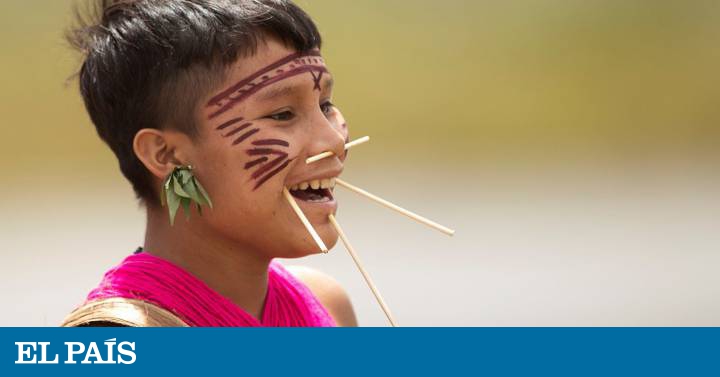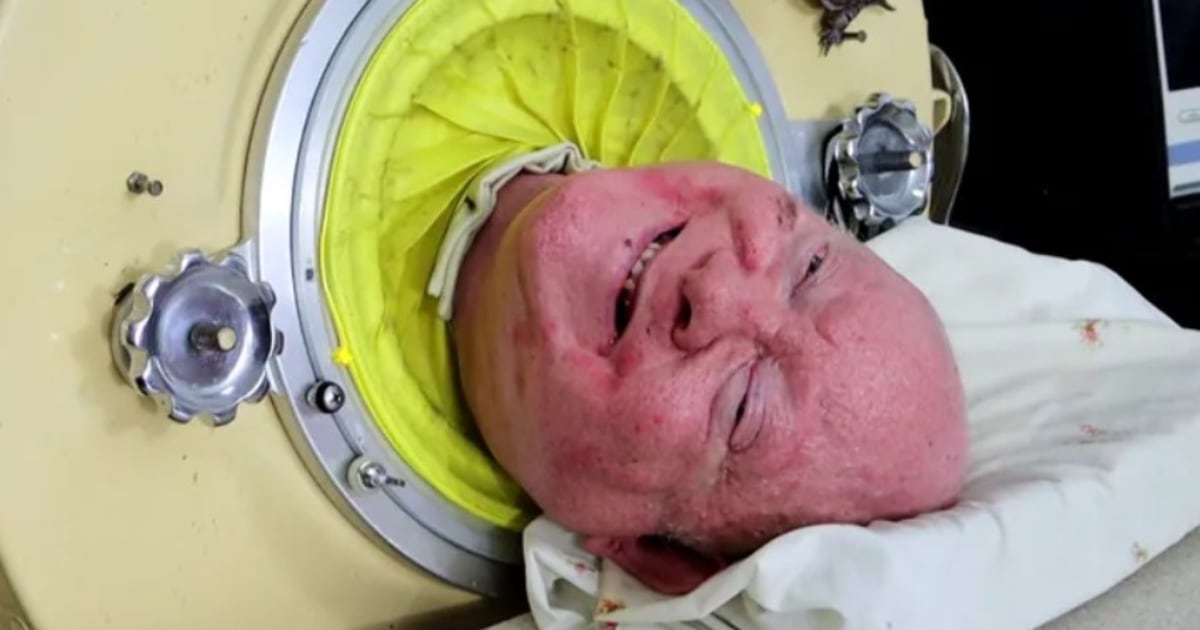Brazil is the country with the most diagnosed cases of coronavirus in indigenous peoples. With 12,048 infected indigenous people and 444 deaths, according to data from the July 7th of the Articulation of Indigenous Peoples (APIB), the current challenge is to guarantee health care and stop the spread of the pandemic. "The indigenous peoples of the Amazon are facing a health emergency situation that is becoming more uncontrolled every day," alerts Angela Amanakwa Kaxuyana, from the Kaxuyana ethnic group and representative of the Coordination of Indigenous Organizations of the Brazilian Amazon (COIAB). Currently, the largest focus of coronavirus in all of Brazil is located in a 2,000-kilometer stretch along the Amazon River, the main transportation route in one of the regions of the country with the highest concentration of indigenous peoples, according to a Brazilian study of the Federal University of Pelotas (UFP) São Paulo, published in the scientific journal medRxiv. This same research shows that the prevalence of infections among the indigenous population, of 3.7%, is almost triple that of the national average, 1.4%.
MORE INFORMATION
- The double threat to the peoples of the Amazon
- Covid-19 spreads among indigenous Brazilians and threatens isolated peoples
- The death of the future: covid among the native peoples
"It is not consistent to remove a person from their indigenous village to treat any disease in one of the Amazon cities that are epicenters of the coronavirus pandemic," says Amanakwa. She explains that some of them are contracting the coronavirus in hospitals or medical centers in the big cities where they were admitted with other diseases, sometimes without awareness of the contagion, which can be a potential cause of the virus's entry into indigenous villages.
Some Indigenous Health Houses (CASAI), such as the one in Manaus and the CASAI-Y Yanomami in Boa Vista, which are primary care centers with a residence for companions and where many indigenous people await the transfer back to their villages after treatment, they have become foci of contagion for coronavirus. In municipalities such as São Gabriel da Cachoeira, where the majority of the population is indigenous and has the sixth highest rate of infection in the state of Amazonas, there is only one small military hospital without any Intensive Care Unit (ICU) and any serious case depends on the availability of a small plane to transport him to a larger hospital. Some covid-19 patients in the municipality have died without medical attention and many indigenous communities face the challenge of establishing internal quarantines for those infected due to their customs of community life.
For peoples living in areas more distant from the few hospitals with ICUs, the situation is even more challenging. "If we had a serious emergency and the plane was unable to come, it would take us five to six days by canoe to get to the nearest hospital," says Amanakwa. Various social movements celebrated on June 16 the approval in the upper and lower houses of an emergency plan against the covid-19 for indigenous peoples that provides for the distribution of essential items, purchase of respirators, hiring of more professionals, means for the transfer of patients and, the most anticipated measure, the construction of field hospitals in the most critical regions. However, President Jair Bolsonaro (who has just tested positive for coranaviruses) reserves the right to veto certain provisions of said Plan and the Ministry of Health carries out specific actions to distribute the covid-19 test and other equipment.
Historically forgotten by public policies and especially discriminated against by Bolsonaro, some peoples fear an increase in suicides as a result of the pressure generated by the covid-19, according to the indigenous leader Higson Kanamari, president of the Kanamari do Vale do Javari Indigenous Association ( Akavaja) to the digital magazine Amazonia Real. For its part, the COIAB has launched a campaign to collect donations to help both indigenous people and health professionals who are facing a shortage of protective equipment, and more than 1,300 volunteer doctors with the support of civil and business society. They have launched the Covid Mission project to offer remote telemedicine consultations.
The prevalence of contagion among the indigenous population, 3.7%, is almost triple the national average, 1.4%
"We need urgent alternatives, each person transferred with covid-19 or another contagious disease leaves a trace on the plane, in the boat or in other means of transport, as well as in the companions," explains Eric Jennings, a neurosurgeon doctor who treats several indigenous peoples of the Amazon. Jennings also coordinates the health team of a small high-resolution hospital built on the Zo'é indigenous land, Pará state. Based on his experience in community health, this doctor believes that it is necessary to decentralize health care and reserve large city hospitals only to attend to the most serious cases. "It is not feasible, let alone in a time of pandemic, to concentrate all the services in one place."
The challenge of bringing medical care to indigenous people
Although all indigenous peoples have the right to medical attention from the public health service, the fixed presence of a medical team in each indigenous land is only provided by law for isolated peoples or those of recent contact due to the risk that the transfer would entail. to the city for populations with little immunity to outside disease. This public policy, guaranteed by measure No. 4049, was developed by the National Indian Foundation (Funai) together with health specialists and approved in 2018. However, its implementation is still scarce and one of the few examples in which It can be observed is in the small zo'é hospital created in 2003 on the occasion of the installation of the Funai Cuminapanema Ethno-Environmental Protection Front.
This small hospital is built following the sociocultural specificities of the Zo'é people, considered a town of recent contact with outside society. The doctor is the one who travels, a nursing team and assistants always remain on the premises and in the last 20 years, only three patients per year with need for specific treatments have traveled to the city, on average, according to Jennings. Although this community health project was recognized as an exemplary model of indigenous health by the United Nations in 2011, to this day it continues to be an isolated experience in the face of the health difficulties faced by the rest of the indigenous populations of the Brazilian territory.
Jennings, who cares for other indigenous peoples in the Amazon and knows the challenges of health care for the various Amazonian ethnic groups infected with coronavirus, adds that the transfer of their members to the city has strong psychological impacts and is also more expensive. long-term treatment on the ground, considering that the average value of a plane flight is around 300 euros.
Among the sociocultural impacts of traveling to urban hospitals are the absence of their traditional therapeutic practices, different eating habits and communication barriers, since some members of indigenous peoples do not speak Portuguese. "The time has come to broaden our horizons and to bring the technology and medical knowledge that we have to small communities and not always start from the premise of moving patients to the city," says Dr. Jennings.
The Zo'é do not present any case of contagion of coronavirus so far. When in mid-March the Funai warned them on the radio about the threat of the coronavirus pandemic, all the families decided to move to the villages furthest from the hospital and the base where the Funai professionals are, at a distance of one day on foot.
We need urgent alternatives, each person transferred with covid-19 or another contagious disease leaves a trace in the means of transport, as well as in the companions
Eric Jennings, neurosurgeon attending in the Amazon
For the Zo'é, the disease as such does not exist, their perception of health comes from the observation of symptoms. According to his worldview, there are two types of pain: some can be sent by the dead or by the spirits of nature in revenge for some bad practice, such as excessive hunting, and others come from abroad. They call the latter kirahi ahy, which means "pain of the whites", in front of which the most appropriate thing is to disperse.
This town is made up of 315 indigenous people grouped into four communities that move according to the seasons of the year among its 46 villages located in key places of its territory according to the availability of hunting and fishing. "They can be completely isolated and survive very well from the resources of nature as they have always done because they have not created dependency on the city," explains Dr. Jennings, who highlights that many indigenous communities have not been able to remain completely confined at this time. of pandemic due to the need to purchase food products from abroad.
In addition to food sovereignty, the Zo'é have their own therapeutic practices: towari, burning tobacco leaves and other native herbs, is used to heal pain caused by attacks by "spirits of nature". They also use roots and shells of some trees that they take in the form of infusions and apply a natural pain reliever of warm oil from the fruit of the castanheira or Brazilian walnut (Bertholletia, in Latin ). Midwives and zo'é midwives are in charge of all births, although generally the pregnant woman's family settles in one of the closest villages of the health center, where the medical team can go more easily if there are any complications. "We keep track of all deliveries, but we only intervene when necessary," adds Jennings, who underlines the importance of a zo'é being born in its own territory.
This small hospital on indigenous land guarantees both basic health care and care for surgeries of medium complexity and, in some cases, of high complexity such as hernia or cataract operations. On average, the medical team can carry out 15 interventions of medium and high difficulty per year. The center is equipped with materials for dental consultations, general analyzes, a portable X-ray machine, and also supplies all basic vaccines, including regular flu updates. "Mild and average cases of covid-19 could be cared for with the infrastructure of this indigenous hospital," Jennings explains. The health team, together with the Funai and volunteer researchers, are looking for a way to acquire the donation of a mechanical respirator to be forewarned against a possible contagion within this town that keeps alive the memory of previous epidemics.
The Zo'é lost a quarter of their total population in the late 1980s, just as evangelical missionaries from the New Tribes Brazil Mission made the first contacts with a population living in voluntary isolation. The Funai expelled the missionaries and established a base in the land of the Zo'é in the 1990s, which operates to this day to guarantee their rights and to prevent the unwanted entry of other outsiders into the community. However, Survival International warns that the pressure on its territory and its resources is increasing: "Chestnut gatherers, gold diggers, missionaries and hunters periodically invade their land, and the border of soybean crops is getting closer" .
The entry of invaders into indigenous lands for the illegal extraction of resources remains latent even during the current health crisis caused by the pandemic. It is a threat not only for the Zo'é, but also for the Yanomami and for many other native peoples of Brazil exposed to the destruction of their territories and the risk of external contagion of coronaviruses despite the titanic efforts they are carrying out to protect themselves and avoid having to be transferred to capital hospitals. “All deceased patients in the city must be buried there. It is a body that does not return to the indigenous village to go through funeral rituals, "says Jennings.
You can follow PLANETA FUTURO on Twitter and Facebook and Instagram, and subscribe here to our newsletter.








